Last updated on April 21, 2024
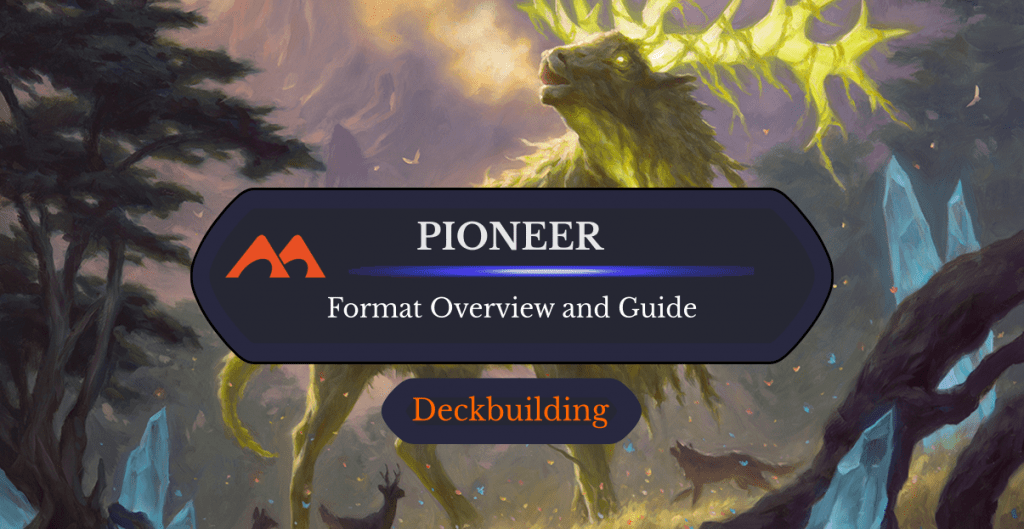
Jegantha, the Wellspring | Illustration by Chris Rahn
Hello again wizards of the world! Looking for new ways to play constructed Magic outside Standard or Historic? Well, look no further.
Today we’ll cover Pioneer, one of the many ways that WotC offers players to engage in the competitive environment. And I’m not alone this time, as we have a very special guest today to help us on unravel the secrets of this exciting format: the Brazilian pro player and MTG grinder, Hamuda! I'll be leaning a lot on his expertise to give you a good overview of the format.
All About the Pioneer Format
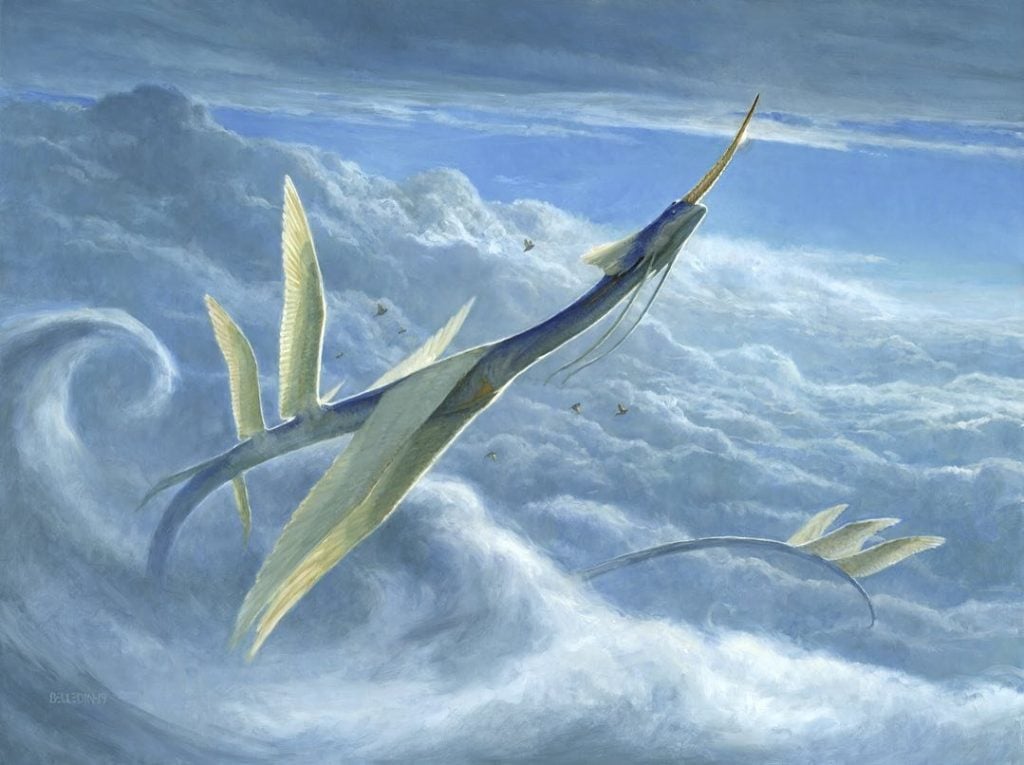
Yorion, Sky Nomad | Illustration by Steven Belledin
In talking with Hamuda, he characterized Pioneer as “a format filled with nostalgia from getting to play recent previous Standard sets that rotated.”
And by that definition, this is a non-rotating format that encourages players to remember how Standard was a couple of sets earlier to revive those feelings and strategies that they use to be familiar with. And possibly to reuse some card that would otherwise be worthless. It's also great for players that are relatively new as it allows them to get good, competitive decks without having to spend too much.
Pioneer is a rather slow format compared to the other non-rotating ones. The big difference being that there are no fetch lands, and this is huge. Strategies take more turns to set their mana properly and there aren’t too many aggressive builds that can take advantage of good removal spells like Fatal Push, Molten Collapse, and Abrupt Decay to deal with early threats.
The Legal Sets
We can contrast Pioneer to Modern in the sense that the oldest set is the Eighth Edition from July 2003, over 20 years ago. That’s a huge card pool that not all players have access to. However, Pioneer's oldest set was Return to Ravnica, which was released in October 2012.
Does this mean that in five more years we could get a new format from more recent sets? Only time will tell. But, for now, here's the list of the legal sets for Pioneer:
- The Lost Caverns of Ixalan
- Wilds of Eldraine
- March of the Machine: The Aftermath
- March of the Machine
- Phyrexia: All Will Be One
- The Brothers' War
- Dominaria United
- Streets of New Capenna
- Kamigawa: Neon Dynasty
- Innistrad: Crimson Vow
- Innistrad: Midnight Hunt
- D&D: Adventures in the Forgotten Realms
- Strixhaven: School of Mages
- Kaldheim
- Zendikar Rising
- Core 2021
- Ikoria: Lair of Behemoths
- Theros: Beyond Death
- Throne of Eldraine
- Core Set 2020
- War of the Spark
- Ravnica Allegiance
- Guilds of Ravnica
- Core Set 2019
- Dominaria
- Rivals of Ixalan
- Ixalan
- Hour of Devastation
- Amonkhet
- Aether Revolt
- Kaladesh
- Eldritch Moon
- Shadows over Innistrad
- Oath of the Gatewatch
- Battle for Zendikar
- Magic Origins
- Dragons of Tarkir
- Fate Reforged
- Khans of Tarkir
- Magic 2015
- Journey into Nyx
- Born of the Gods
- Theros
- Magic 2014
- Dragon's Maze
- Gatecrash
- Return to Ravnica
The Rules
The following rules apply for this Constructed format:
- Minimum of 60 cards.
- No maximum deck size as long as you can shuffle your deck unassisted.
- Up to 15 cards in your sideboard, if used.
- Your combined deck and sideboard can’t contain more than four of any individual card other than basic lands, based on the English card title.
The Ban List
The latest bans for this format were on December 4, 2023 and aimed to encourage diversity, fun, and a fair game. Here’s the full list of banned cards in Pioneer:
- Balustrade Spy
- Bloodstained Mire
- Expressive Iteration
- Felidar Guardian
- Field of the Dead
- Flooded Strand
- Geological Appraiser
- Inverter of Truth
- Karn, the Great Creator
- Kethis, the Hidden Hand
- Leyline of Abundance
- Lurrus of the Dream-Den
- Nexus of Fate
- Oko, Thief of Crowns
- Once Upon a Time
- Polluted Delta
- Teferi, Time Raveler
- Undercity Informer
- Underworld Breach
- Uro, Titan of Nature's Wrath
- Veil of Summer
- Walking Ballista
- Wilderness Reclamation
- Windswept Heath
- Winota, Joiner of Forces
- Wooded Foothill
Let’s talk a little about what these bans mean for the format in Hamuda’s opinion. First of all, I wanna mention again that there are no fetch lands in Pioneer. Powerful spells are great, but only if you can cast them. That’s why mana bases are so important. The reason all fetch lands were banned was to ensure that they weren’t paired with shock lands as they are in Modern. It gives the format more of a unique identity.
If you want to learn the fundamentals of Modern's identity, I recommend checking out Reid Duke's course here.
This leads to a slower format where midrange archetypes are more abundant but, more importantly, other bans help serve as a breath of fresh air for deck builders. You can experiment with a lot of things since the format isn’t dominated or polarized by oppressive builds, so you have a chance to build more decks and have fun.
Where to Play Pioneer
Pioneer is a format that you can play mostly on MTG Online, but it can also be played in paper at your local store or at sanctioned tournaments near you. For paper Magic players, you can schedule regular Pioneer tournaments across the world using a webcam setup.
There are multiple options, particularly if you’re open to playing online, but let's cover some basics first.
There are two different economy pieces when it comes to MTG Online: play points and tickets. You can earn play points as rewards from events, and they’re used as entry options to events as well. Tickets have a similar role in events but aren’t directly given to you as prizes. Instead, you earn treasure chests that you can sell to bots for tickets. You can also get your hands on new cards and products using tickets, you can also sell those MTGO tickets for cash at a later time.
There is a third way to enter some special events if you have a high win rate and earn a profit from events: qualifier points. Qualifier points give you access to exclusive events and a chance to qualify for the Magic Online Championship Series.
With all that out of the way, let's cover each event on MTG Online!
Pioneer Challenge
Entry cost: 30 tickets or 300 play points
These events happen during the weekend over Saturday and Sunday. It’s the most competitive scenario you can get, with queues can going as high as 300 players. These are scheduled matches, meaning that you’ll need to get paired for the next round after a match is finished. Rewards start at 64th place and you earn a profit from 16th place forward.
There are two variants of the event: a 64-player minimum and a 32-player minimum.
64-Player Event
| Placement | Rewards |
|---|---|
| 1st | 600 play points + 100 treasure chests + 40 qualifier points + 1 non-foil set of the most recent Standard-legal set |
| 2nd | 600 play points + 75 treasure chests + 40 qualifier points |
| 3rd to 4th | 450 play points + 50 treasure chests + 20 qualifier points |
| 5th to 8th | 450 play points + 25 treasure chests + 10 qualifier points |
| 9th to 16th | 300 play points + 10 treasure chests |
| 17th to 32nd | 300 play points + 5 treasure chests |
| 33rd to 64th | 150 play points |
32-Player Event
| Placement | Rewards |
|---|---|
| 1st | 600 play points + 100 treasure chests + 40 qualifier points + 1 non-foil set of the most recent Standard-legal set |
| 2nd | 600 play points + 75 treasure chests + 40 qualifier points |
| 3rd to 4th | 450 play points + 50 treasure chests + 20 qualifier points |
| 5th to 8th | 450 play points + 25 treasure chests + 10 qualifier points |
| 9th to 16th | 300 play points + 10 treasure chests |
| 17th to 32nd | 300 play points + 5 treasure chests |
Pioneer Preliminary
Entry cost: 30 tickets or 300 play points
The schedule for these events are based on WotC’s calendar. They happen two to three times a month, and the goal is to earn qualifier points for other events that get you access to the MOCS event. These are four rounds during which you’ll earn rewards at two wins and get a profit once you hit three wins.
| # of Wins | Rewards |
|---|---|
| 4 | 600 play points + 5 treasure chests + 40 qualifier points |
| 3 | 300 play points + 3 treasure chests + 20 qualifier points |
| 2 | 150 play points + 1 treasure chest + 10 qualifier points |
Pioneer League
Entry cost: 10 tickets or 100 play points
Bring your Pioneer deck and play five matches on your schedule. You get prizes above two wins and profit above three.
| # of Wins | Rewards |
|---|---|
| 5 | 150 play points + 11 treasure chests + 5 qualifier points |
| 4 | 120 play points + 5 treasure chests + 2 qualifier points |
| 3 | 100 play points + 1 treasure chest + 1 qualifier point |
| 2 | 50 play points |
Pioneer 2-Player Queue
Entry cost: 2 tickets or 20 play points
These events are single matches won by the first player to reach two game wins in the allotted time. If you win the match you earn a profit, but you also get some of your entry fee back if you lose.
| Placement | Rewards |
|---|---|
| 1st | 30 play points |
| 2nd | 5 play points |
Super Qualifiers
Entry cost: 40 tickets or 400 play points or 40 qualifier points
Similar to the Preliminaries, these events happen a couple of times a season for the format and based on demand, between 129 to 672 players. Prizes start at 128th place and you start to earn a profit once you hit 32nd place.
| Placement | Rewards |
|---|---|
| 1st to 2nd | 900 play points + 200 treasure chests + 1 premium foil set of the most recent Standard-legal set + MTG Arena Split Championship invitation |
| 3rd to 4th | 750 play points + 150 treasure chests + 1 premium foil set of the most recent Standard-legal set |
| 5th to 8th | 600 play points + 100 treasure chests + 1 non-foil set of the most recent Standard-legal set |
| 9th to 16th | 400 play points + 50 treasure chests |
| 17th to 32nd | 400 play points + 25 treasure chests |
| 33rd to 64th | 200 play points + 10 treasure chests |
| 65th to 128th | 100 play points |
Pioneer Showcase
Entry cost: 40 qualifier points
You can only access these events by accumulating profit from either Leagues or Preliminary events. These are exclusive events that follow a particular schedule, and you start earning profit once you get to 64th place.
| Placement | Rewards |
|---|---|
| 1st | 900 play points + 200 treasure chests + 1 premium foil set of the most recent Standard-legal set + Champions Showcase Qualifier invitation |
| 2nd | 750 play points + 150 treasure chests + 1 premium foil set of the most recent Standard-legal set + Champions Showcase Qualifier invitation |
| 3rd to 4th | 600 play points + 100 treasure chests + 1 non-foil set of the most recent Standard-legal set + Champions Showcase Qualifier invitation |
| 5th to 8th | 450 play points + 50 treasure chests + 1 non-foil set of the most recent Standard-legal set + Champions Showcase Qualifier invitation |
| 9th to 16th | 300 play points + 25 treasure chests |
| 17th to 32nd | 300 play points + 15 treasure chests |
| 33rd to 64th | 150 play points + 5 treasure chests |
Showcase Last Chance Events
Entry cost: 40 qualifier points and 30 tickets or 40 qualifier points and 300 play points
These events are for players who were unable to earn an entry into the Showcase Qualifiers but still have at least 40 qualifier points in their accounts.
| # of Wins | Rewards |
|---|---|
| 5 | 600 play points + Champions Showcase Qualifiers invitation |
| 4 | 450 play points |
| 3 | 300 play points |
Showcase Qualifiers
Entry cost: Pioneer format token
Players who earn an entry into the Showcase Qualifier will be squaring off for an invitation to the Champions Showcase. These are spread over the first few weeks of the following season.
Each Showcase Qualifier is a scheduled Swiss-style event with a top 8 playoff. The winner of each event earns a spot in the final Showcase and a chance to earn their share of $70,000 and a Split Championship invitation.
| Placement | Rewards |
|---|---|
| 1st | 900 play points + 200 treasure chests + 1 format avatar + 1 premium foil set of the most recent Standard-legal set + MTG Arena Championship invitation |
| 2nd | 750 play points + 150 treasure chests + 1 format avatar + 1 premium foil set of the most recent Standard-legal set |
| 3rd to 4th | 600 play points + 100 treasure chests + 1 format avatar + 1 non-foil set of the most recent Standard-legal set |
| 5th to 8th | 450 play points + 50 treasure chests + 1 format avatar + 1 non-foil set of the most recent Standard-legal set |
| 9th to 16th | 300 play points + 25 treasure chests + 1 format avatar |
| 17th+ | 300 play points + 15 treasure chests + 1 format avatar |
Other Options
You can use a third-party program to start and schedule your very own events. You get to decide there if it's by webcam or using MTG Online, which is currently the only digital way to play Pioneer, and you also get full control over rounds and pairings.
Notable Cards and Interactions in Pioneer
As Hamuda described, there are a lot of decks currently in Pioneer and a lot of room for brewing thanks to recent bans. There are some cards that are well-established in the format, though, so let’s take a look at them.
Smuggler's Copter
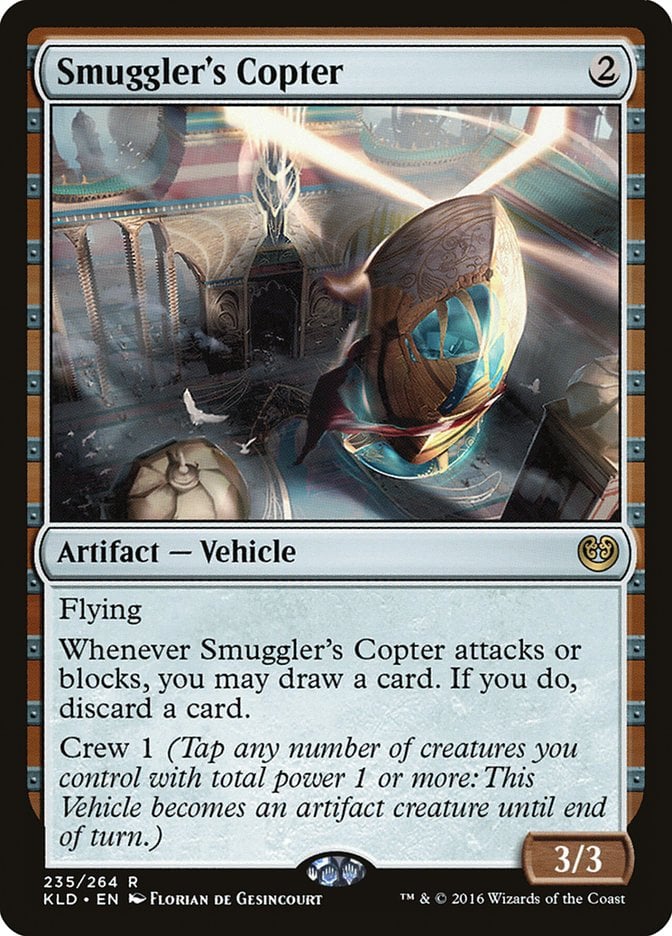
The unbanning of Smuggler's Copter might give the Greasfang decks new tools, and reintroduce creative builds.
Companions
Since their introduction, companions have been a staple in every Magic format and Pioneer is no exception. The most popular among them are Jegantha the Wellspring and Yorion, Sky Nomad.
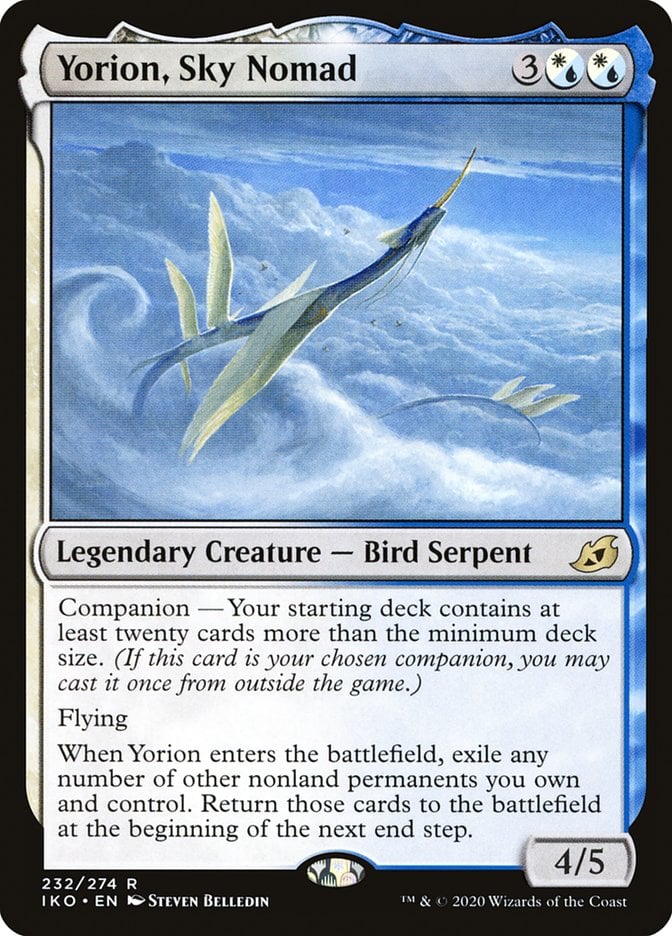
Yorion and its love for blinking enchantments and ETB effects is well know by now, but Pioneer in particular has access to some pretty cool combos with planeswalkers like Narset, Parter of Veils or Nahiri, the Harbinger.
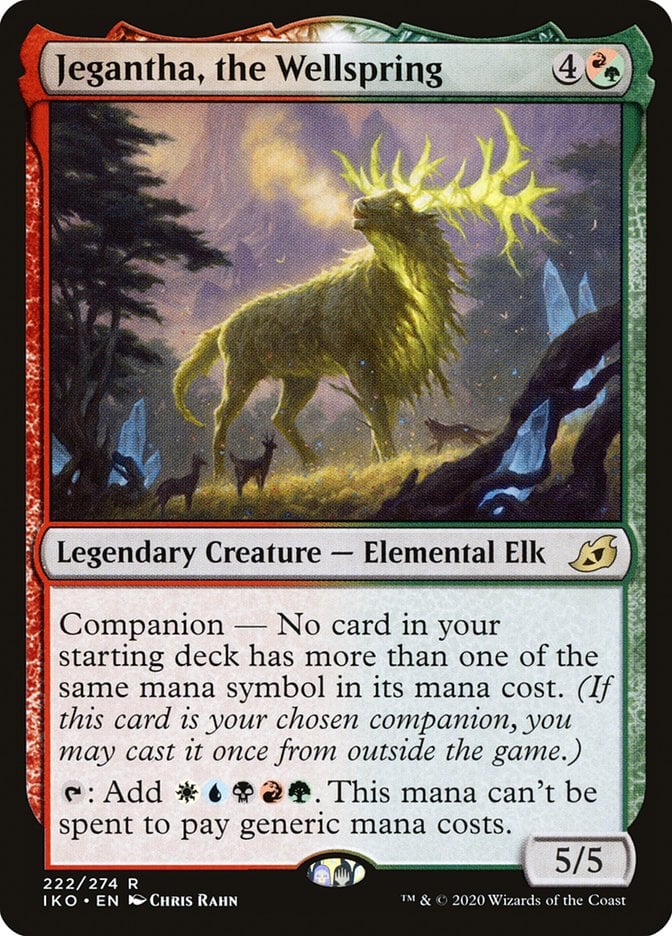
Jegantha on its own isn’t as powerful as the other companions, but it’s a 5/5 body that’s always there to help when you need it. Decks that can afford to pay the toll really appreciate the extra card.
Some Cool Interactions
Some other strategies that Hamuda pointed out rely on non-companion cards that are very powerful on their own.
Dreadhorde Arcanist
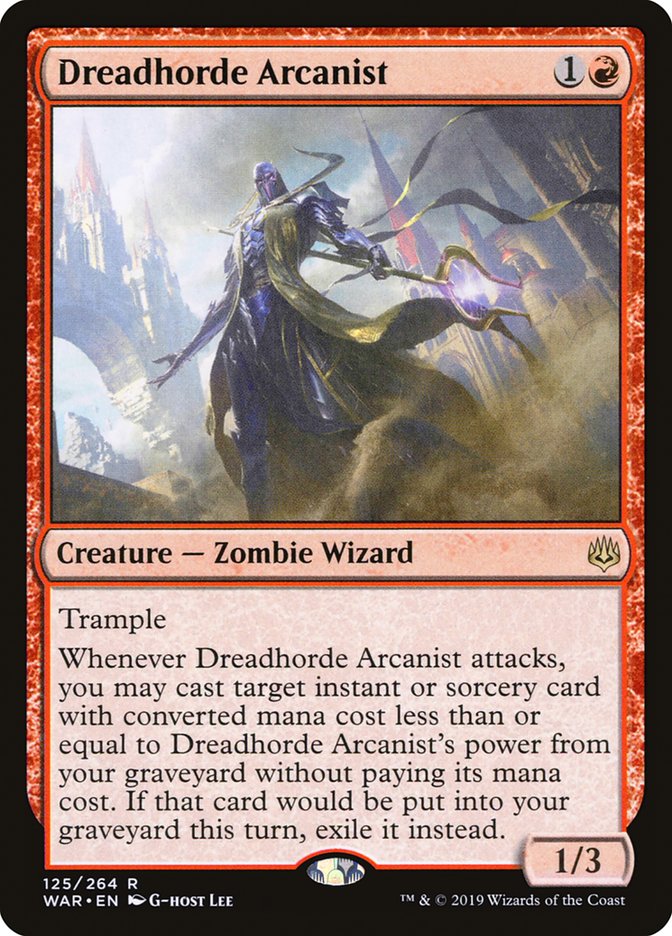
This card can outvalue your opponent in very nasty ways. A turn 1 Thoughtseize, turn 2 Arcanist, and then turn 3 Thoughtseize is a very tough spot to find yourself against. You can even afford to Thoughtseize twice on the same turn. You could also abuse powerful removal spells like Fatal Push or Reckless Rage.
Soul-Scar Mage
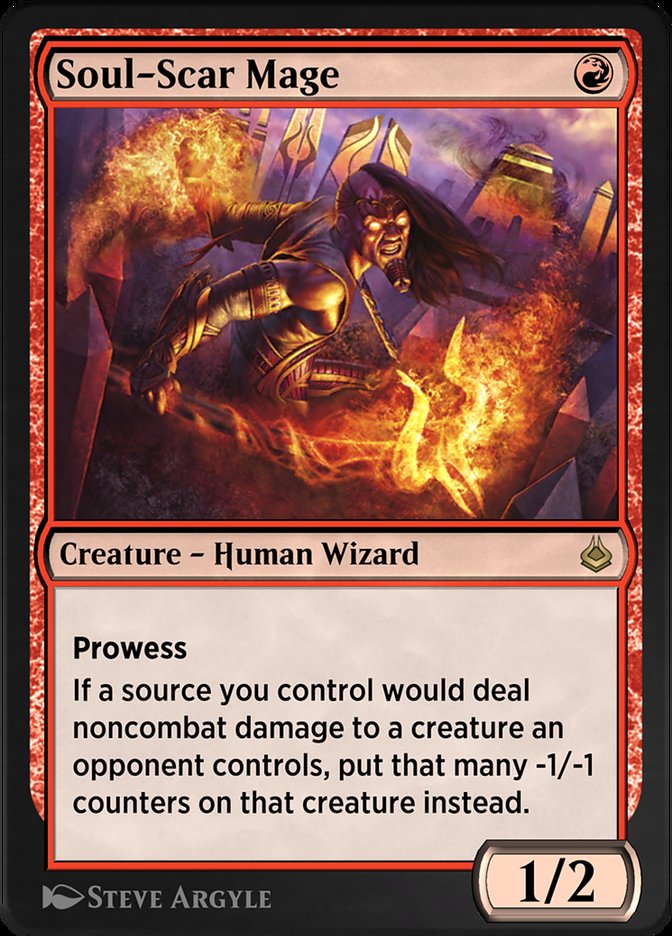
Soul-Scar Mage is a threatening card, as it can shrink big creatures down with removal and grow itself in combat, while also pairing very well with cards like Wizard's Lightning and pretty much any other spell. It’s a card that you can build whole decks around. Not necessarily just Burn decks, but also tempo decks like Izzet () or cheap decks with lots of cantrips like Crash Through.
Nykthos, Shrine to Nyx
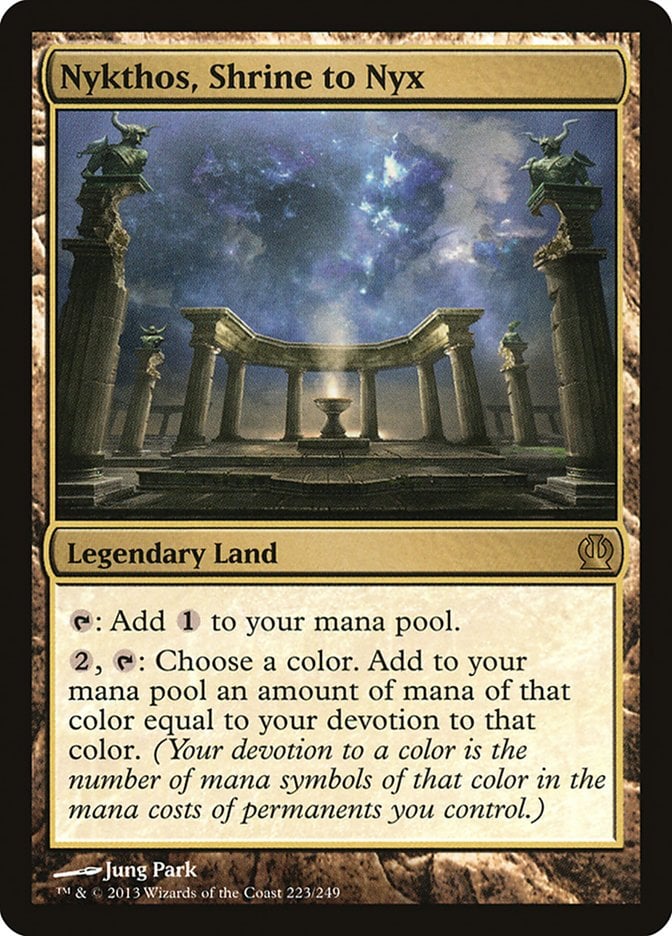
Nykthos, Shrine to Nyx is a card that made mono-green somewhat polarizing in the meta. The plan is to put it into play, ideally with a Cavalier of Thorns as early as turn 3, and chain spells to fill the board with more treats than your opponent can handle.
While this card can fit into other mono-colored decks, green is the one that uses it better. But make no mistake; decks like Selesnya () angels started using it to help cast cards like Kayla's Reconstruction and put multiple creatures into play.
Niv-Mizzet Reborn
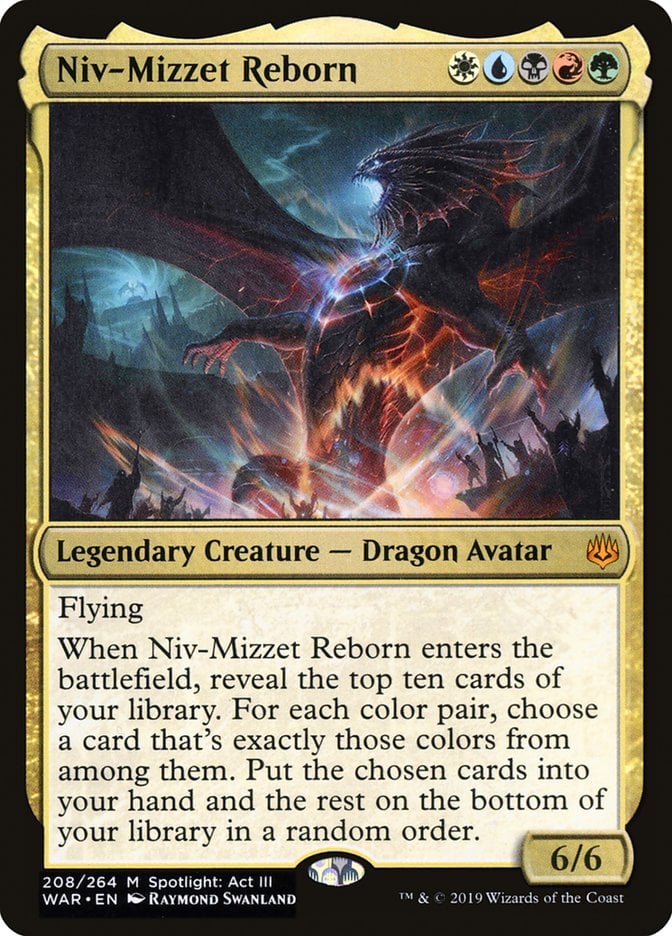
Weirdly enough, 5-color mana bases are a thing in Pioneer, and since it’s slow you can rely on cards like Sylvan Caryatid to enable a pretty cool combo with Bring to Light and Niv-Mizzet Reborn. Depending on how you play these two cards, you can either search Niv-Mizzet with Bring to Light or put Bring to Light into your hand with Niv-Mizzet.
Arclight Phoenix
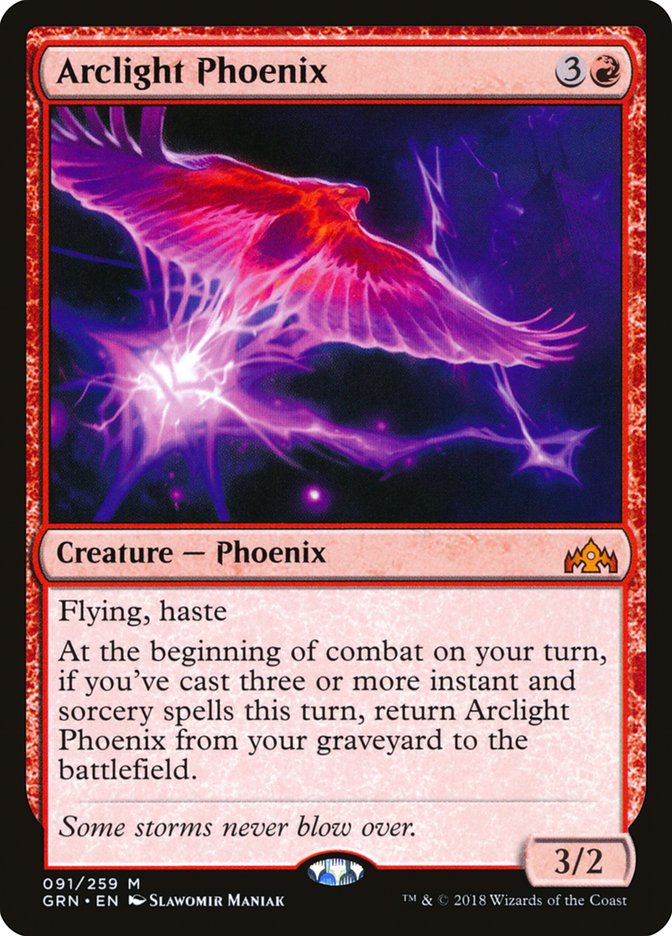
The cool part about Arclight Phoenix is that it can fit into multiple versions of the same Izzet spells decks. It doesn't matter if it's built more like a control version with Thing in the Ice, or an aggro one Sprite Dragon, the phoenix always comes back from the graveyard if you manage to chain cheap spells together.
Pioneer Metagame and Decks
The Pioneer meta has a lot of room for brewing, but there are some decks and strategies that never change. It’s time to go over some of Hamuda's picks for the strongest decks in the current meta, as well as his personal favorites.
Rakdos Midrange
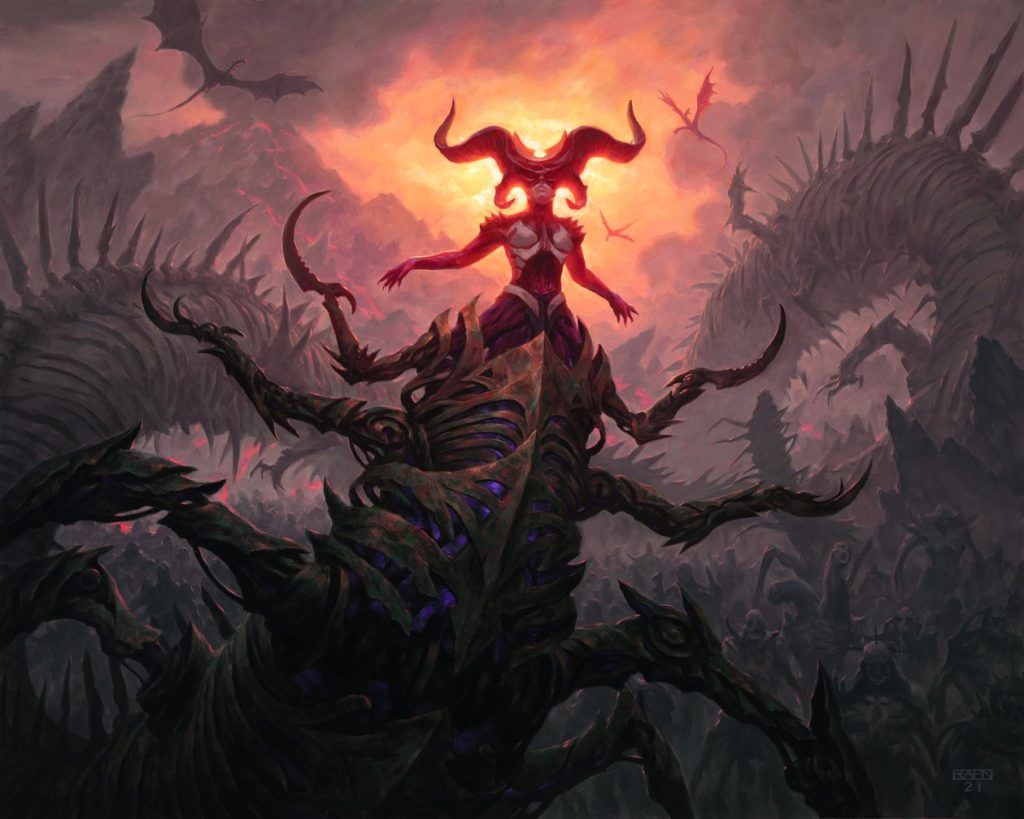
Sheoldred, the Apocalypse | Illustration by Chris Rahn
Creature (16)
Misery's Shadow
Bloodtithe Harvester x4
Kroxa, Titan of Death's Hunger x2
Graveyard Trespasser x2
Bonecrusher Giant x4
Sheoldred, the Apocalypse x3
Sorcery (6)
Duress
Thoughtseize x4
Dreadbore
Instant (7)
Fatal Push x4
Heartless Act x2
The End
Enchantment (4)
Fable of the Mirror-Breaker x4
Artifact (2)
Reckoner Bankbuster
Unlicensed Hearse
Land (25)
Blightstep Pathway x4
Blood Crypt x4
Castle Locthwain x2
Den of the Bugbear
Haunted Ridge x4
Hive of the Eye Tyrant x2
Mountain x2
Sokenzan, Crucible of Defiance
Sulfurous Springs
Swamp x3
Takenuma, Abandoned Mire
Sideboard (15)
Duress
Go Blank x2
Extinction Event x3
Rending Volley x2
Abrade
Hidetsugu Consumes All
Pithing Needle x2
Reckoner Bankbuster x2
Skysovereign, Consul Flagship
Rakdos () was positioned as the deck that could beat the best before Winota's ban in the format. With it gone and some powerful additions like Misery's Shadow and Sheoldred, the Apocalypse, Rakdos has become the deck to beat thanks to its combination of solid and efficient spot removal with hand disruption and powerful creatures that can pressure your opponents and put them on a clock very quickly.
Mono Green Devotion
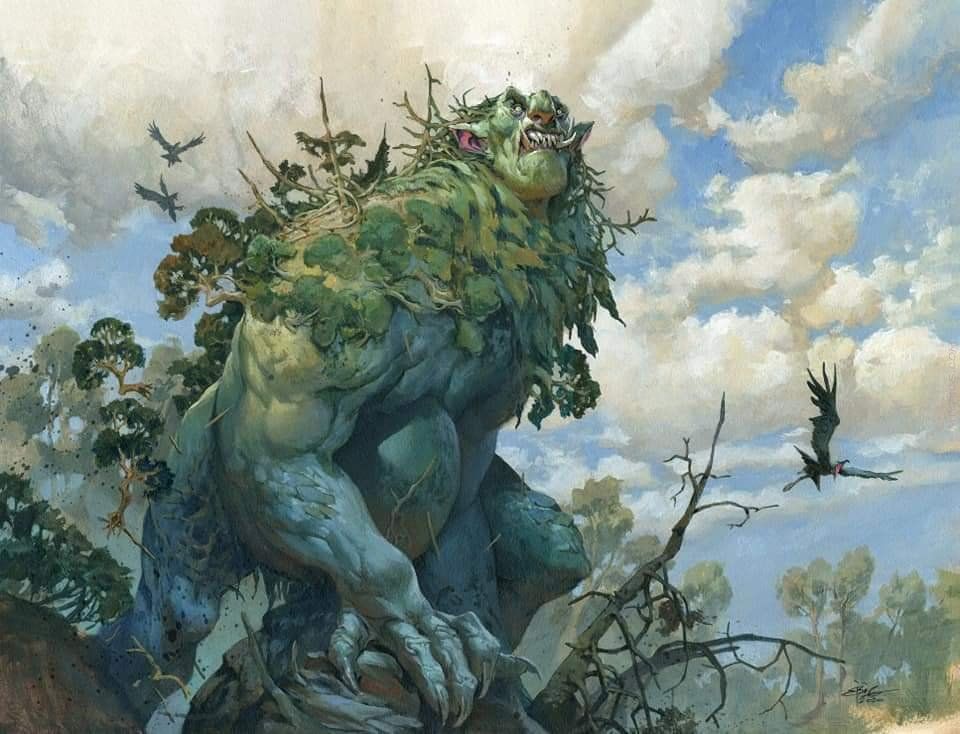
Old-Growth Troll | Illustration by Jesper Ejsing
Planeswalker (4)
Creature (24)
Elvish Mystic x4
Llanowar Elves x4
Old-Growth Troll x4
Steel Leaf Champion x4
Polukranos Reborn x3
Cavalier of Thorns x4
Cityscape Leveler
Sorcery (4)
Enchantment (7)
Oath of Nissa x3
Wolfwillow Haven x4
Land (21)
Boseiju, Who Endures x2
Forest x13
Lair of the Hydra x2
Nykthos, Shrine to Nyx x4
Sideboard (15)
Haywire Mite
Cityscape Leveler
Woodcaller Automaton
Emrakul, the Promised End
Tormod's Crypt
Darksteel Citadel
Pithing Needle
Damping Sphere
The Filigree Sylex
The Stone Brain
Transmogrifying Wand
Pestilent Cauldron
The Chain Veil
Esika's Chariot
Skysovereign, Consul Flagship
Fighting for the title of the best deck of the format, mono green aims to ramp into multiple threats in a single turn and chain spells together to perform a seemingly infinite turn of spells thanks to Kiora, Behemoth Beckoner and The Chain Veil. What's weird about it is that this deck rarely wins by attacking while running big creatures thanks to its combo potential.
Mono White Humans
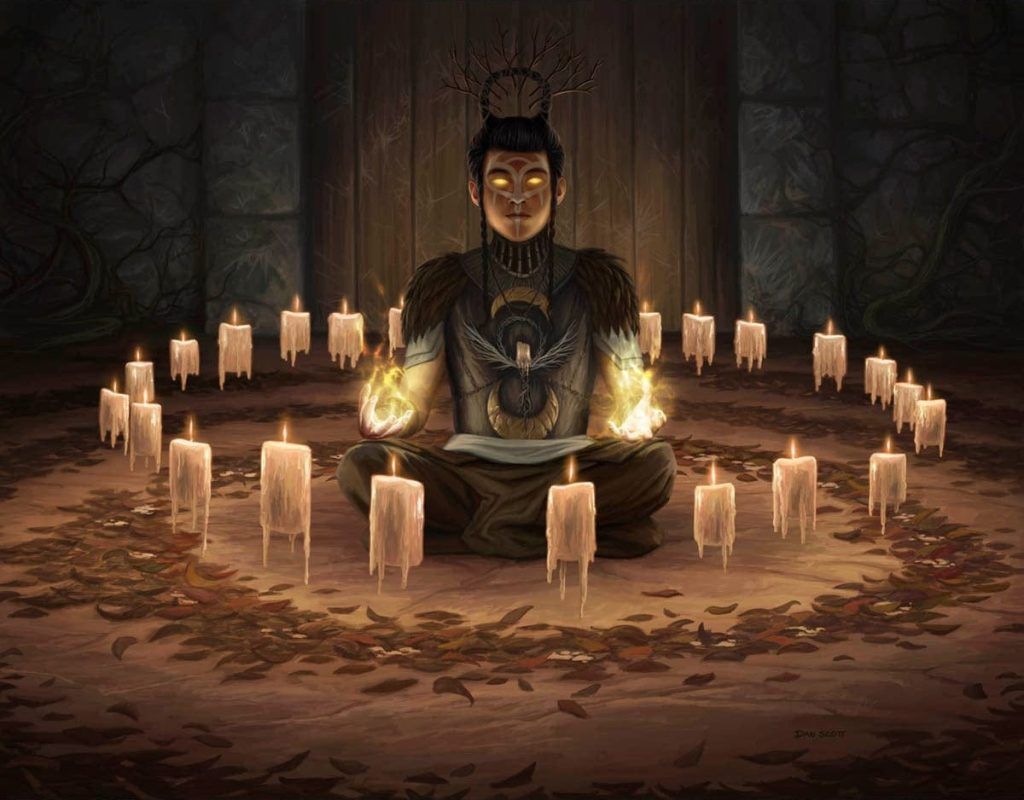
Hopeful Initiate | Illustration by Dan Scott
Creature (32)
Dauntless Bodyguard x4
Hopeful Initiate x4
Kytheon, Hero of Akros x2
Recruitment Officer x4
Coppercoat Vanguard x4
Thalia's Lieutenant x4
Thalia, Guardian of Thraben x4
Brutal Cathar x2
Adeline, Resplendent Cathar x4
Instant (2)
Enchantment (3)
Ossification x3
Artifact (1)
Land (22)
Castle Ardenvale x2
Eiganjo, Seat of the Empire x2
Mutavault x4
Plains x14
Sideboard (15)
Destroy Evil x2
Ossification
Rest in Peace x3
Wedding Announcement x4
Portable Hole x3
Invasion of Gobakhan x2
Mono white is known as the fun police of the format. Its plan is simple: Put your opponent on a clock by taxing their mana and playing cheap creatures that hit hard.
Azorius Control
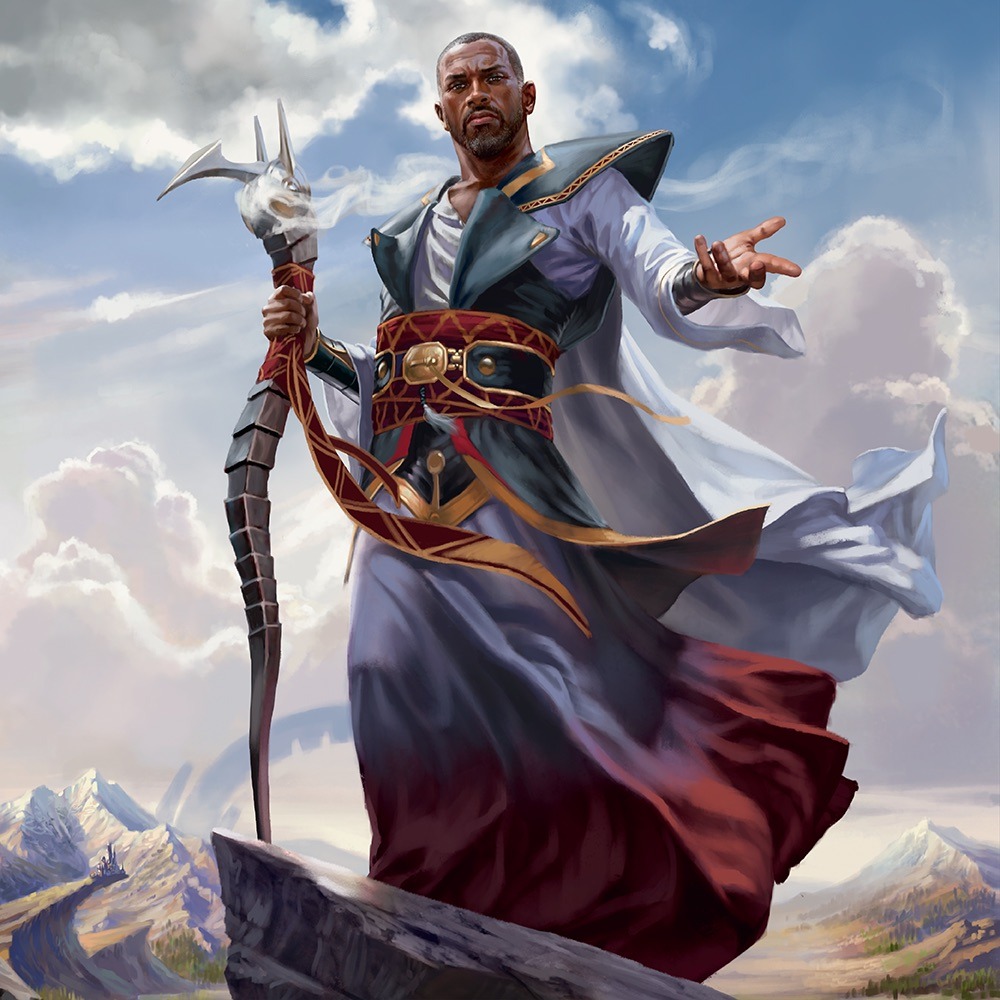
Teferi, Hero of Dominaria | Illustration by Chris Rallis
Planeswalker (7)
Narset, Parter of Veils
The Wandering Emperor x3
Teferi, Hero of Dominaria x3
Sorcery (6)
Lay Down Arms x3
Supreme Verdict x2
Farewell
Instant (17)
March of Otherworldly Light x2
Dovin's Veto x3
Make Disappear x4
Absorb x3
Thirst for Discovery
Settle the Wreckage
Memory Deluge x3
Enchantment (3)
Land (27)
Castle Ardenvale
Castle Vantress
Field of Ruin x3
Hall of Storm Giants
Hallowed Fountain x4
Irrigated Farmland x4
Island x3
Otawara, Soaring City
Plains x5
Prairie Stream x4
Sideboard (15)
Boon-Bringer Valkyrie x2
Hullbreaker Horror
Sunset Revelry x2
Divine Smite
Aether Gust x2
Test of Talents x2
Narset's Reversal
Mystical Dispute
Temporary Lockdown x3
Azorius () is the resident control deck of the format. Neon Dynasty provided powerful tools game-changers like The Wandering Emperor and March of Otherworldly Light to push this archetype as one of the top contenders.
The plan here is to survive the initial onslaught of aggro decks, control the midgame, and win the game 10 turns later mostly thanks to Teferi, Hero of Dominaria. It's not the most enjoyable deck to play, but this is undoubtedly the most potent control archetype.
Izzet Phoenix
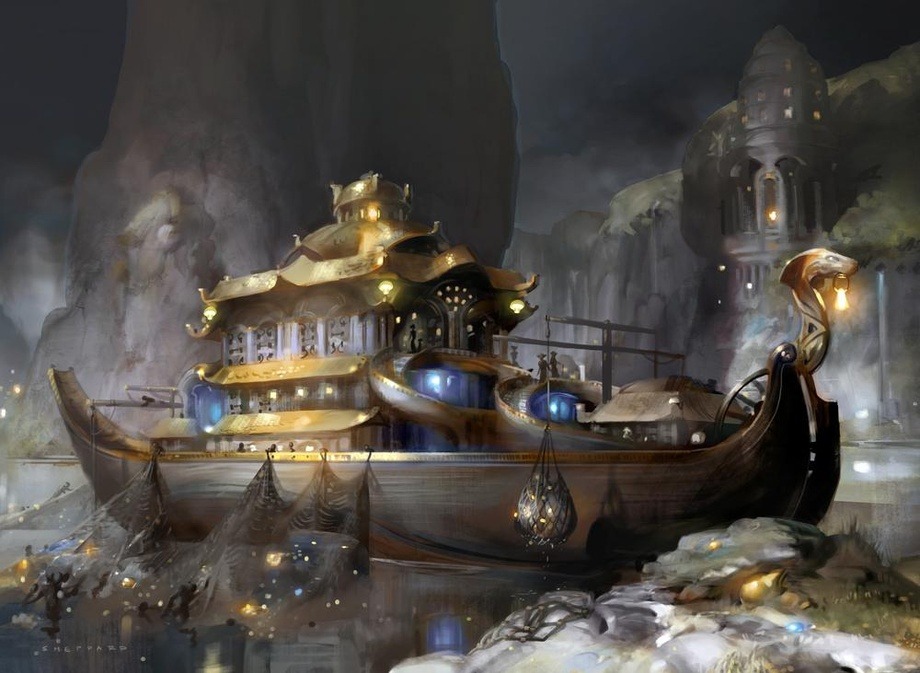
Treasure Cruise | Illustration by Cynthia Sheppard
Creature (12)
Picklock Prankster x4
Thing in the Ice x4
Arclight Phoenix x4
Sorcery (8)
Sleight of Hand x4
Treasure Cruise x4
Instant (22)
Consider x4
Opt x4
Otherworldly Gaze x4
Fiery Impulse x4
Lightning Axe x4
Izzet Charm x2
Land (18)
Hall of Storm Giants
Island x2
Otawara, Soaring City
Riverglide Pathway x4
Shivan Reef
Spirebluff Canal x4
Steam Vents x4
Stormcarved Coast
Sideboard (15)
Saheeli, Sublime Artificer x2
Crackling Drake x2
Brotherhood's End x2
Aether Gust x2
Disdainful Stroke x2
Negate
Abrade x2
Mystical Dispute x2
Izzet Phoenix is the other top dog in the metagame. It's similar to its Historic counterpart with one significant upgrade: It has access to Temporal Trespass. And although it misses Dragon's Rage Channeler, this deck still has access to other powerful creatures like Thing in the Ice.
The Return of The Pro Tour
With an announcement in early 2022 Wizards brought the tournament and competitive scene to a new level. Part of that comes with regional championships, store championships, and the Pro Tour. While the championships can be a variety of formats, the first announced Pro Tour, Pro Tour Phyrexia, was officially Pioneer and Limited.
Most of the RCQ from the season were also Pioneer ones, and this made cards go up in price for both paper and online. Despite this players enjoyed playing it since it's considered one of the best Constructed formats at the moment.
Pioneer vs. Historic and Explorer
Pioneer is very similar to Historic and Explorer as both are based on the premise of non-rotating formats fed from Standard sets. The big difference is that Historic has a more narrow card pool since it’s exclusive to MTG Arena, which is missing a lot of sets that are available in Pioneer. WotC is trying to close this gap by introducing the Explorer format, which is essentially the skeleton of Pioneer that will one day encompass “all the Pioneer cards that matter.”
When it comes to deckbuilding, Historic’s smaller card pool leads to more straightforward strategies and less room to brew since as pretty much all the decks are well defined at this point. When it comes to Pioneer, there are decks that are fairly new to the metagame and there's a lot of ways to go with it with a wider card pool. It can be a combo or an aggro deck depending on your taste.
If you’re looking to grind out games and spend your time rather than your money building your collection, you’d be better positioned on MTGA playing Historic. You might also be better off in Historic if you’re an excellent limited player as you probably have hundreds of wildcards that can be spent to craft powerful Historic decks.
If you’re a grinder like Hamuda, though, you can start with a cheap deck on MTG Online and grind your way to powerful cards for your Pioneer decks. If one strategy isn’t working for you, just sell your cards back to the bots and build a new deck. You could also subscribe to rental card programs if you’re committed to getting good results while investing little to no money.
I would say that Historic and Pioneer are totally different formats. Grinders that make a living out of game results prefer Pioneer since there are well-established events and they can jump into tournaments whenever they want. Historic, on the other hand is often a casual format, but Wizards has been trying to increase its stature by featuring it in its set championship events recently.
Pioneer on MTG Arena
WotC has recently taken up the daunting task of porting Pioneer over to MTGA. They're doing this through the new “Explorer” format, which seeks to have all the cards on MTGA in addition to all relevant cards from Pioneer eventually included.
The format was released alongside Streets of New Capenna. So far we've had two bundles that introduced supplemental cards for the set and it's now almost identical to Pioneer. Some key cards are still missing, like Urborg, Tomb of Yawgmoth and Bring to Light.
Pioneer Products
The only products even potentially for Pioneer on Arena are the recent remastered sets. We got a lot of cool cards to brew decks around and I’d say it was a total hit. Later this year, we can expect to get new Explorer packs, which will include the most relevant cards in the Pioneer format
In paper, we had the release of the Pioneer 2021 Challenger Decks. This is a great sign for the format, so be sure to check out our review article.
On top of that, we got four new Challenger Decks for 2022, in the form of Izzet Phoenix, Gruul Stompy, Dimir Control, and Orzhov Humans.
Note that although Expressive Iteration is banned in Pioneer, it is included in the Challenger Deck, and it is legal if you play the exact Challenger Deck without alterations.
Wrap Up
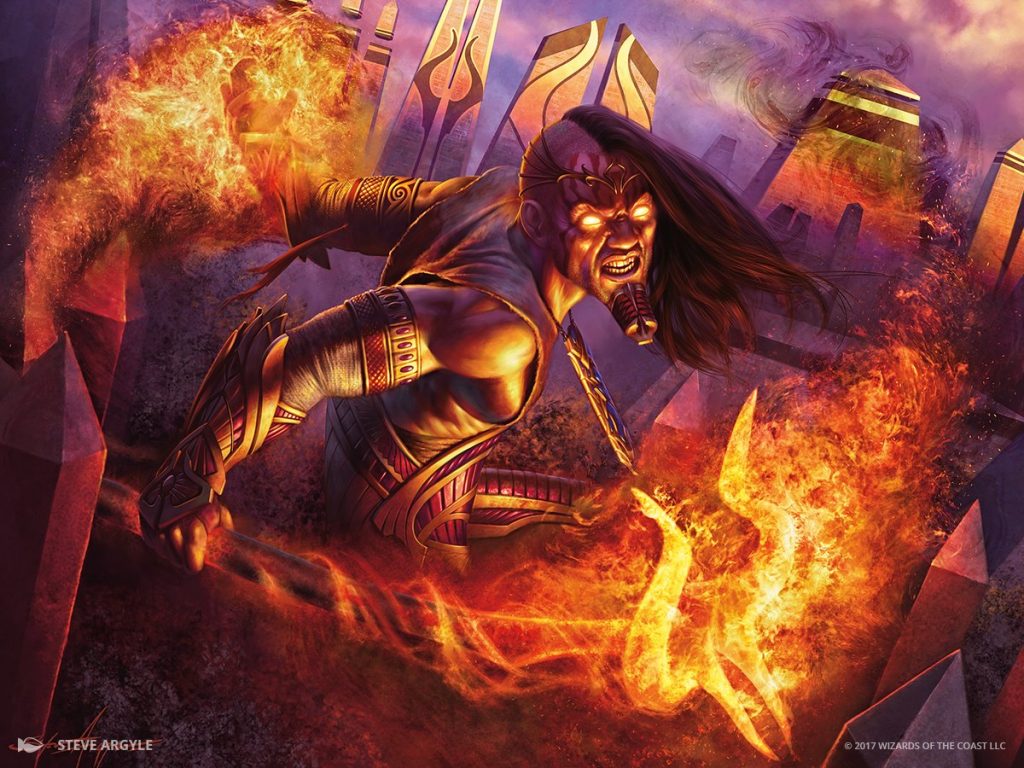
Soul-Scar Mage | Illustration by Steve Argyle
We’ve finally come to the end of this journey. I hope all of the info above has been of help to you.
I want to take a minute to thank Hamuda who helped me get a better understanding of the format and its current state, and offered the point of view from a professional grinder. If you want to support him and look at his content, you can follow him on Twitter, Twitch, and even YouTube! Most of his content is in Portuguese, but if you’re looking for good gameplay (and music), you’ll definitely want to check him out.
You can also check out more from us by joining our Discord or finding us on Twitter/X!
Thank you for your time. Stay safe and healthy, and I’ll see you in the next one!
Note: this post contains affiliate links. If you use these links to make a purchase, you’ll help Draftsim continue to provide awesome free articles and apps.
Follow Draftsim for awesome articles and set updates:










Add Comment